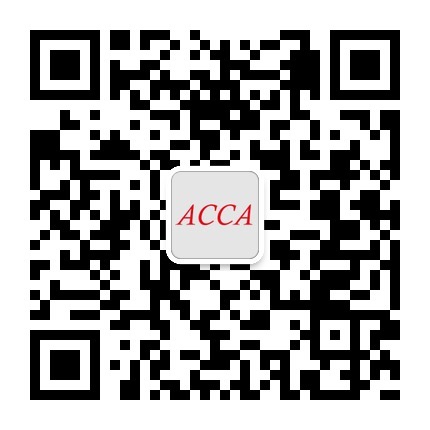

1、凡本网站注明“来源高顿教育”或“来源高顿网校”或“来源高顿”,的所有作品,均为本网站合法拥有版权的作品,未经本网站授权,任何媒体、网站、个人不得转载、链接、转帖或以其他方式使用。
2、经本网站合法授权的,应在授权范围内使用,且使用时必须注明“来源高顿网校”或“来源高顿”,并不得对作品中出现的“高顿”字样进行删减、替换等。违反上述声明者,本网站将依法追究其法律责任。
3、本网站的部分资料转载自互联网,均尽力标明作者和出处。本网站转载的目的在于传递更多信息,并不意味着赞同其观点或证实其描述,本网站不对其真实性负责。
4、如您认为本网站刊载作品涉及版权等问题,请与本网站联系(邮箱fawu@gaodun.com,电话:021-31587497),本网站核实确认后会尽快予以处理。
ACCAP阶段报名费是多少?一文介绍全了!关于证书考试的费用一直是同学们比较关注的问题,特别是ACCA这类各科报名费用都有差异的考试,学姐为大家整理...
2023-11-28ACCAP阶段有哪些科目?各科目详细介绍!ACCA考试科目分为不同的阶段,很多同学在报名的时候都比较想知道考试科目的具体区分,学姐就带来了详细的介绍...
2023-03-14acca考试分为F阶段和P阶段,考生通过F阶段的9门科目之后就可以开始报考P阶段的科目了,P阶段的科目考试难度比F阶段的难度上升了一个层次,很多考生会...
2023-03-10ACCAP阶段有考试顺序吗?有哪些要注意的?ACCA考试是分为两个不同阶段的,基础F阶段共9门科目,专业P阶段共6门科目,有同学知道考试需要按照阶段顺序来...
2023-03-08ACCA考试科目:《ATX高级税务》重点详解!作为在P阶段科目中涉及较多计算的考试科目,很多同学面对ATX可以说是束手无策,学姐就从多个角度来为大家介...
2023-03-06ACCA考试科目:《AFM高级财务管理》重点详解!作为ACCA考试的第十二门科目,很多同学在选修时都会选择它,对于这门科目还不了解的同学赶快看这里,学...
2023-03-06ACCA考试科目:《APM高级业绩管理》重点详解!APM作为ACCA考试P阶段的选修科目,有部分同学在选择选修科目的时候就选择了它,那么学姐就来为大家详细介...
2023-03-06ACCAp阶段有效期是多久?需要几年内考完?ACCA考试科目数量比较多,很多同学在报考的时候不知道这些科目的有效期规定,学姐就来为大家介绍一下,想了...
2023-03-01ACCAP阶段选修选哪两门?各科难度对比来了!在选择选修科目的时候,同学们要先了解各个科目考试的具体内容,看看是否有自己比较熟悉的知识点,学姐...
2023-02-282023年ACCA的sbl怎么学?点击查收备考攻略!部分同学结束了F阶段的考试,也即将踏入P阶段的考试,在选择第一门的ACCA的P阶段考试时,可能都比较迷茫,学...
2023-02-2463题E选项为何不选啊!持有公司发行股份5%前五名股东单位任职人员不能担任,10%已经大于5%不是应该能担任吗?如果不能担任,范围是多少
资本公积的计算过程不理解
B为什么不对呢
老师:可以分别和我说一下: 1.非货币性资产交换:双方的入账价值和差额怎么确认吗 2.债务重组的:双方入账价值和差额分别怎么确认 3.长期股权投资:初始投资成本,初始入账价值 这几个概念经常弄晕
77题C选项不是应该1%,为什么C正确
63题E选项为何不选啊!持有公司发行股份5%前五名股东单位任职人员不能担任,10%已经大于5%不是应该能担任吗?如果不能担任,范围是多少
资本公积的计算过程不理解
B为什么不对呢
老师:可以分别和我说一下: 1.非货币性资产交换:双方的入账价值和差额怎么确认吗 2.债务重组的:双方入账价值和差额分别怎么确认 3.长期股权投资:初始投资成本,初始入账价值 这几个概念经常弄晕
77题C选项不是应该1%,为什么C正确
ACCA专业阶段考试科目有哪些?究竟都考些什么?ACCA考试科目数量是比较多的,而且各个科目考试的内容都有较大的差别,如果同学们比较好奇P阶段部分的科目,就来看看下面这篇文章了解一下吧! 【免费下载】戳我领取2023年ACCA全新考纲解析和全科备考资料 一、ACCA专业阶段考试科目有哪些 ACCA专业阶段.........
2023-04-23ACCAP阶段科目考完需要多久?速戳了解!关于ACCA的考试,很多同学都想了解详细的信息,学姐也整理了部分ACCA相关的内容,想要了解的同学可以在这篇文章中找到具体信息! ACCAP阶段科目考完 需要1年左右 ,学姐为大家整理了2023年ACCA全新备考资料, 速戳领取 一、ACCAP阶段科目考完需要多久 ACCAP阶段科目.........
2023-03-28ACCA高级课程是哪几门?和基础课程比难度怎么样?报考过ACCA的同学应该都知道,ACCA的考试科目共有15门,分为不同的阶段,有F基础阶段和P专业阶段之分,赶快来和学姐一起了解各阶段课程吧! 一、ACCA高级课程是哪几门 ACCA的专业P阶段一般是我们所俗称的高级课程,一共6门,分为两个部分,有2门必考,.........
2023-03-17sbr和sbl哪个难?ACCAP阶段先考哪个?关于ACCA考试科目的难度一直是大家比较想知道的,学姐就整理了关于这项考试的P阶段考试科目的详细情况,看完这篇你就了解了! 一、sbr和sbl哪个难 如果从通过率来看,sbr和sbl的难度其实类似,都在50%左右,但这两门考试的侧重方向不同,sbl偏向文字类,sbr则更偏向计.........
2023-03-16ACCAP阶段报名费是多少?一文介绍全了!关于证书考试的费用一直是同学们比较关注的问题,特别是ACCA这类各科报名费用都有差异的考试,学姐为大家整理了P阶段的费用情况,赶快查看下文了解吧! 一、ACCAP阶段报名费是多少 ACCA的考试报名费是根据报名时段不同也存在差异的,以2023年的费用情况为例,.........
2023-11-28ACCA专业阶段考试难度,已经参与了ACCA考试的同学会知道,考试科目是分为两个阶段的,分别是基础F阶段和专业P阶段,F阶段的科目的难度比较低,基本通过率都在40%以上,有部分科目能达到80%,但P阶段的难度会提高一些,具体有多难呢?来看看学姐怎么说吧! 一、ACCA专业阶段考试难度 ACCA专业阶段科目.........
2023-01-12ACCAp阶段报考顺序推荐,先报哪个好?通过ACCAF阶段的考试之后,很多同学对于P阶段科目的报考顺序开始发愁,要知道P阶段的难度会有提升,而且科目也都是不能免考的,赶快来看看学姐怎么分析吧! 一、ACCAp阶段报考顺序 首先我们先了解一下P阶段的各个科目,其中必考两门为《SBL战略商业领袖》、《.........
2022-12-15参加过acca考试的小伙伴应该都知道,acca的考试总共分为f阶段和p阶段,其难度也是随着考试的进程而升高的。有小伙伴就想知道:ACCAp阶段一次最多考几门?p阶段成绩有效期是多久?现在就一起来了解一下吧! 一、ACCAp阶段一次最多考几门 ACCAp阶段一次最多考四门。每年也最多报考八门。只有P阶段的考试.........
2022-08-24ACCA考试一共有两个阶段,分别是F阶段和P阶段,其考试难度也是逐渐增大的。因此就有小伙伴有疑问了:ACCA的p阶段需要备考多久才够?考试难度怎么样?那么学姐现在就给大家进行一个解答,希望可以帮助到大家哦。 一、ACCA的p阶段需要备考多久才够? ACCA P阶段备考时间没有办法给一个可以量化的,因为.........
2022-08-18相信很多对ACCA比较了解的小伙伴都知道,ACCA的考试分为F阶段和P阶段,随着考试的顺序,考试难度也是逐渐增大的,许多小伙伴比较担心ACCAp阶段的的考试内容,比如ACCAp阶段考试需要考几门?考试时间是哪天?那么现在就跟着学姐一起来了解一下吧! 一、ACCAp阶段考试需要考几门? ACCAp阶段考试需要考六.........
2022-08-15了解ACCA的小伙伴应该都知道,ACCA考试分为F阶段和P阶段,每个阶段里都有一包含的二科目,那么ACCA考试P阶段考几门?P阶段成绩有效期是多久?如果你也不知道这两个问题的答案,那就跟着学姐一起来了解一下~ 一、ACCA考试P阶段考几门 ACCA考试P阶段要考六门。这六门科目分别是:SBL(战略商业领袖)、.........
2022-08-12想必大家在考试之前一定丢听说了ACCAP阶段的考试很难吧,ACCAP阶段科目难度真的很高吗?P阶段是机考吗?既然大家都比较感兴趣,那么学姐今天就给大家解答一下,一起往下看吧! 一、ACCAP阶段科目难度高吗 P阶段内容是F阶段的升级版,例如P4,是F9科目的升级版,同样是讲投资,融资,风险管理,而且考.........
2022-08-10接触过ACCA考试的人都知道ACCA的所有考试科目中,考试的难度是随着ACCA考试进程而升高的。ACCA最后四门也就是P阶段的科目,那么我们今天就来说说,ACCA最后四门难考吗?通过率怎么样?一起来了解一下吧~ 一、ACCA最后四门难考吗? ACCA的后四门课程为P阶段的科目,后四门课程为选修课和4门选修课。这使.........
2022-07-19了解ACCA考试的考试的小伙伴应该都知道ACCA考试采用的是全英文考试试卷,很多英文比较薄弱的小伙伴可能看到这个消息就心生胆怯了,那么对于大家都比较害怕的这个一点,学姐今天就来给大家说一说,ACCA英语不好怎么办?怎么提高英语?希望学姐的解答可以帮助到大家! 一、ACCA英语不好怎么办? 英语.........
2022-07-14ACCA的考试每年都会举行四次,所以大家参加考试的机会还是蛮多的。但是还有一些小白考生对acc机考的报名时间还不太了解,那么学姐今天就来说一说ACCA机考报名时间是什么时候?怎么报考?一起来了解一下吧~ 一、ACCA机考报名时间是什么时候? ACCA F1-F4随时机考,当场知成绩,随报随考,费用固定。考.........
2022-07-14